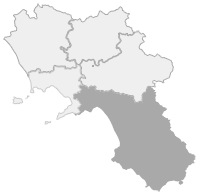For the ancients it was the Stygian lake, which Virgil mentions in the Aeneid, telling about Palinuro’s death.
Close to Capo Palinuro it loses itself in the Tyrrhenian Sea, after flowing for 38 kilometres, from mount Gelbison, where it rises with another name: river Faraone. It collects the waters coming also from mounts Faiatella and Pietra Alta and from the torrent Fosso di Pruno, with the same name. It officially becomes Mingardo after having received the torrent Trave, close to Rofrano. Near Laurito, it is agitated with torrent Utria, and in San Severino it receives on the right the Serrapotamo, the most important of its tributaries. Passing through Mount Bulgheria, it contributes to karst phenomena forming the Forra dell’Emmisi, close to Rofrano, the Gola del Diavolo (Devil’s Gorge), dominated by San Severino and the deep Gorge of Tragara, also known as Valley of Hell, which accompanies its course almost to the sea. It arrives in the Tyrrhenian Sea after having lightly touched the upland on which the ancient Molpa rises. In correspondence of its river’s mouth, on the right and a short distance from the shore, Scoglio del Monaco (cliff) or Mingardo Cliff rises above the sea. On the left, you can see the famous Natural Arch. Close to the mouth, there is the Beach of Marinella Mingardina also known as Mingardo Beach.




Comments powered by CComment